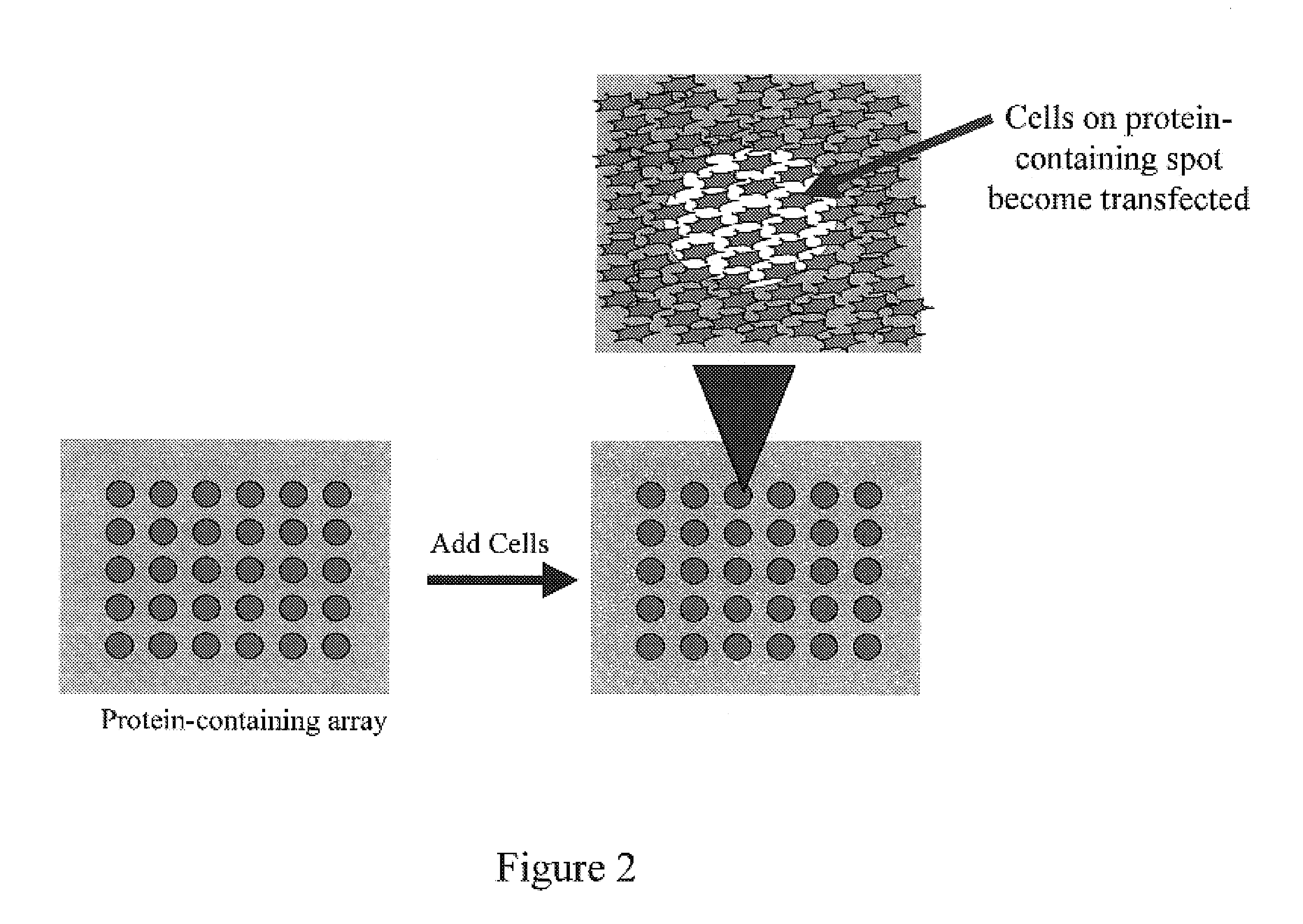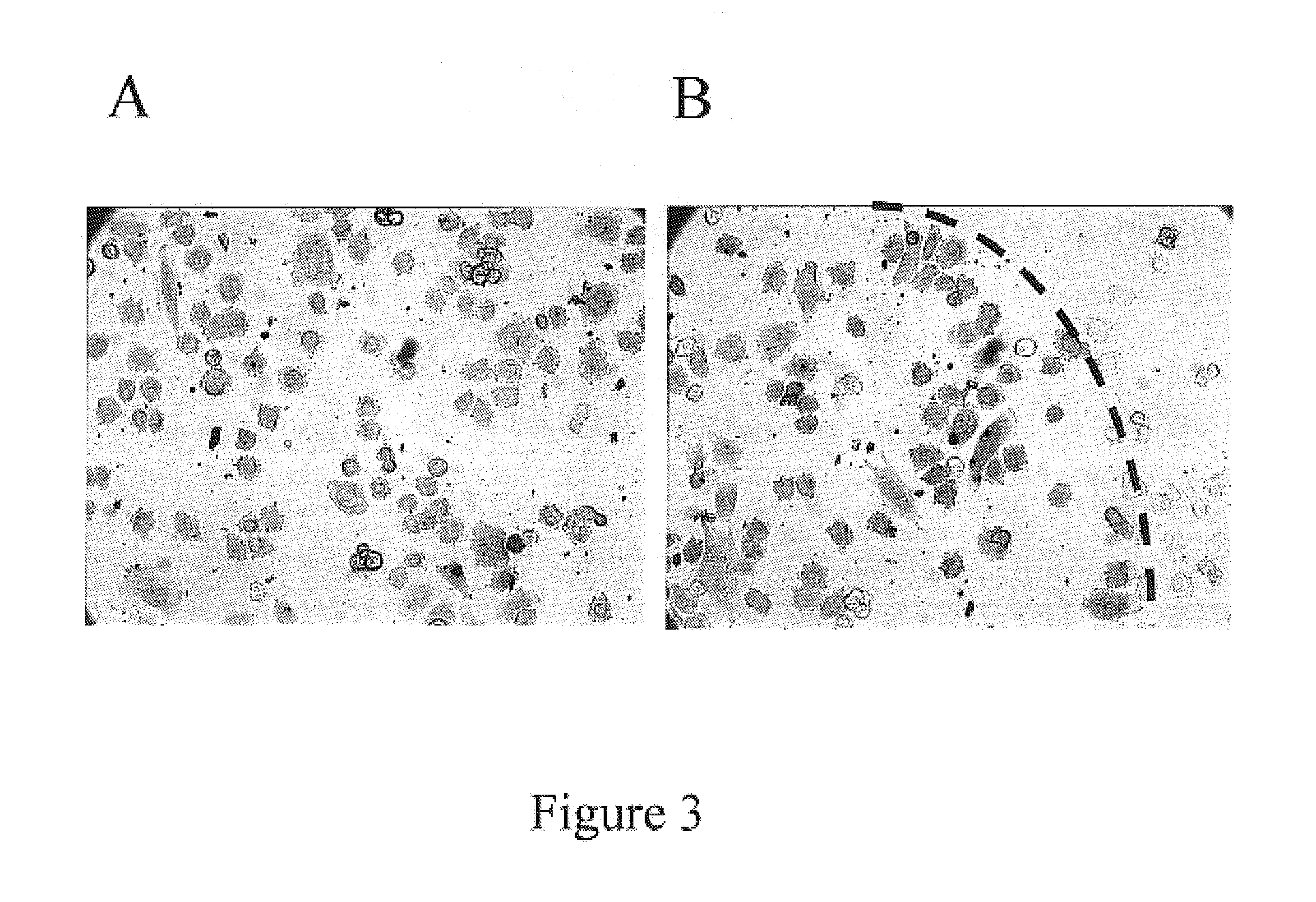Method and device for protein delivery into cells
a cell and protein technology, applied in the field of biological arrays and assays, can solve the problems of limited approaches, low transfection efficiency, and substantial variability, and achieve the effects of enhancing protein delivery efficiency, promoting the delivery of the protein of interest, and achieving greater than 90% efficiency
- Summary
- Abstract
- Description
- Claims
- Application Information
AI Technical Summary
Benefits of technology
Problems solved by technology
Method used
Image
Examples
example
Reverse Delivery of β-galactosidase into Cells
Materials
[0073]The materials used included: β-galactosidase (grade VIII, purified from E. Coli), RGD peptides gly-arg-gly-asp-ser (SEQ ID NO: 4), and gly-arg-gly-asp-ser-pro-lys) (SEQ ID NO: 5), dextran (M.W. 45000 Da), and DEAE-detran (M.W. 40000 Da) (Sigma Chemical (St. Louis, Mo.)); Chariot (Pep-1) (Active Motif Inc, Carlsbad Calif.); and HIV GP-41 fragment (519–541) (Bachem (King of Prussia, PA)); and Gamma-Amino Propyl Silane (GAPS) slides were obtained from Coming Inc (catalog #2550) (Corning, N.Y.). Cell culture media was obtained from Gibco. A β-galactosidase staining kit was obtained from Qiagen. Other chemicals were from Sigma.
Method
Stock Solution Preparations
[0074]In 10 mM PBS buffer (pH 7.4), β-galactosidase was dissolved to a concentration of 0.25 mg / ml, and stored at 4° C. Translocation peptides (i.e., carrier peptide), Chariot or GP41 fragment, were dissolved in 60% DMSO to a concentration of 2 mg / ml, and stored at −20° C....
PUM
| Property | Measurement | Unit |
|---|---|---|
| period of time | aaaaa | aaaaa |
| time period | aaaaa | aaaaa |
| width | aaaaa | aaaaa |
Abstract
Description
Claims
Application Information
 Login to View More
Login to View More - R&D
- Intellectual Property
- Life Sciences
- Materials
- Tech Scout
- Unparalleled Data Quality
- Higher Quality Content
- 60% Fewer Hallucinations
Browse by: Latest US Patents, China's latest patents, Technical Efficacy Thesaurus, Application Domain, Technology Topic, Popular Technical Reports.
© 2025 PatSnap. All rights reserved.Legal|Privacy policy|Modern Slavery Act Transparency Statement|Sitemap|About US| Contact US: help@patsnap.com



